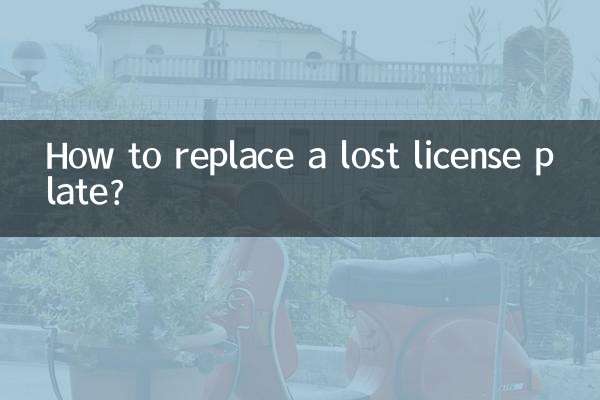What to do if a car hits a car and you are entirely responsible
In a traffic accident, if one party is judged to be solely responsible, the handling process and compensation method will directly affect the interests of both parties. The following is a detailed guide on how to deal with "car collision", combining the hot topics and hot content on the Internet in the past 10 days to provide you with structured data and analysis.
1. Accident scene handling process

When a traffic accident occurs and one party is solely responsible, the following steps must be followed:
| step | Specific operations |
|---|---|
| 1. Parking inspection | Stop the vehicle immediately, turn on the hazard warning flashers, and place a warning sign behind the vehicle. |
| 2. Confirm responsibility | The fully responsible party must take the initiative to admit responsibility and negotiate for compensation; if negotiation cannot be made, call the police. |
| 3. Take photos to collect evidence | Take photos of the accident scene, including vehicle location, collision site, license plate number, etc. |
| 4. Contact your insurance company | The fully responsible party must report the incident to the insurance company within 48 hours and provide relevant evidence. |
| 5. Fill in the accident identification form | After the traffic police arrive at the scene, they will issue an accident determination letter and clarify the division of responsibilities. |
2. Compensation standards and division of responsibilities
The fully responsible party shall bear the other party's vehicle maintenance costs, personnel medical expenses and other reasonable losses. The following are common compensation items:
| Compensation items | illustrate |
|---|---|
| Vehicle maintenance fees | Full compensation shall be made according to the quotation quoted by the 4S store or repair shop. |
| medical expenses | Including hospitalization fees, surgery fees, medicine fees, etc. |
| Lost work fee | Calculated based on the injured party’s income level and time lost from work. |
| transportation expenses | Reasonable transportation expenses incurred as a result of the accident. |
3. Insurance claims process
The fully responsible party needs to settle the claim through the insurance company. The following is the specific process:
| step | Operating Instructions |
|---|---|
| 1. Report a crime | Call the insurance company or report the incident through the APP. |
| 2. Submit materials | Provide accident certificate, driver's license, driving license, maintenance invoice, etc. |
| 3. Loss determination | The insurance company arranges for a loss assessor to assess the damage to the vehicle. |
| 4. Claims | After the insurance company passes the review, the compensation will be paid into the designated account. |
4. Precautions to avoid disputes
1.Keep evidence: Photos of the accident scene, call recordings, etc. can be used as the basis for dispute resolution.
2.Process in time: Exceeding the insurance reporting time limit may result in denial of compensation.
3.consensus: When negotiating the amount of compensation with the other party, try to reach a written agreement.
4.legal approach: If negotiation fails, it can be resolved through litigation.
5. Analysis of hot topics across the entire network
In the past 10 days, the discussion on "full responsibility for car crashes" has focused on the following hot spots:
| hot topics | focus |
|---|---|
| New energy vehicle accident liability | Is battery damage included in the scope of compensation? |
| Insurance denial cases | Disputes caused by failure to report in time or incomplete materials. |
| Full responsibility for driving without a license | Unlicensed drivers bear full responsibility and legal consequences. |
Through the above structured data and hot spot analysis, I hope it can help you clearly understand the handling method of "full responsibility for car collisions" and reasonably safeguard your own rights and interests.

check the details

check the details